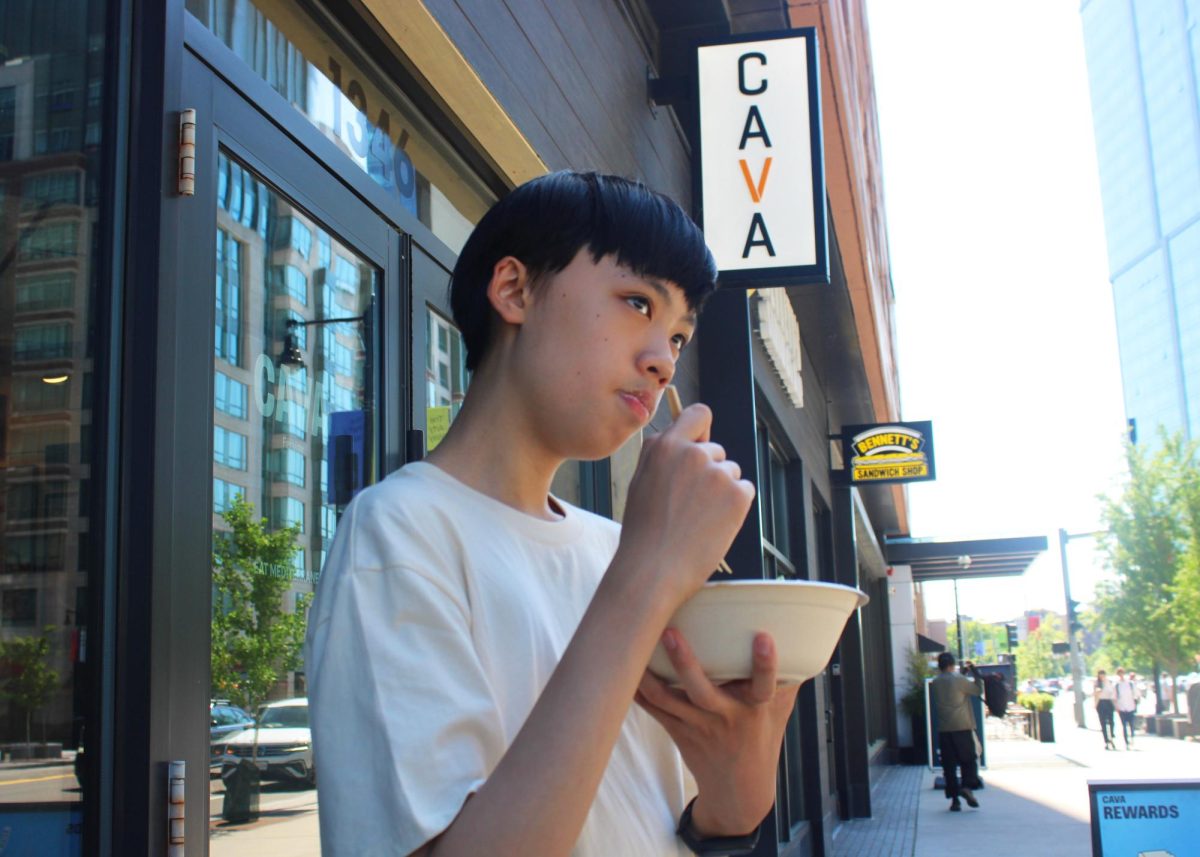Pizza bowls, poke bowls, Chipotle bowls, CAVA bowls, Chinese bowls — name a type of bowl — it exists. The bowl meal, consisting of grains, vegetables and a protein, has been present in the United States for years, but only recently has it become ubiquitous.
Many praise the bowl for its ultra-convenience and speed. The wait time is low and the food can be eaten quickly. This convenience, however, comes with a cost.
The purpose of eating should not be to maximize nutrient intake while minimizing time spent eating. The “bowlification” of cuisines has turned the pleasure of eating delicious food into a streamlined, automated process in an effort to ensure efficient nutrient delivery. Eating at restaurants that use this bowl model is not an enjoyable, social experience, but rather a mere task demanded by society for survival. The value placed on time efficiency over pleasure and taste indeed reflects the rise of hustle culture in today’s world, with people preferring to scarf down food as quickly as possible instead of chatting with staff and fellow customers.
On top of that, the bowl often dilutes the authenticity of real food. Chipotle, for example, offers a heavily Americanized version of Mexican food. Founded by Steve Ells, a white man with a predominately white executive team, Chipotle has often been criticized for claims of cultural appropriation. Menu items, such as barbacoa, often do not encompass the actual dish, and without an explicit explanation of how Chipotle alters the traditional cuisine, the audience loses out on learning about the culture behind the dish. One cannot help but ask themselves whether the convenience is worth diluting real Mexican food, especially when so many authentic options exist.
It’s not just Chipotle — the bowl model’s range has been extended to almost everything, even including Chinese food. One example of a place that claims to have Chinese bowls is Junzi; yet they fail at providing real authentic Chinese cuisine. Sarah Cao (V) explains, “[Junzi bowls] are Chinese-American. If you went to China, they would [ask], ‘What is that?’ People say that they had Chinese food, but they just had the adapted version.”
Bowls, furthermore, oversimplify or outright ignore the techniques and significance behind traditional dishes. Dumpling bowls, for example, which consist of dumpling filling and rice mixed together with other dishes, destroy the cultural significance of the dish. Dumplings have meaning: they are supposed to represent good fortune and unity. Making them and sharing them with loved ones carries a deep cultural significance. A typical Chinese dinner might be three plates of dumplings on the table with some sauce. When bowl restaurants throw dumplings into a bowl with other Chinese foods, they sacrifice the intended way to eat the meal for the sake of appearing trendy.
BLS Chinese teacher Ms. Muqing Gu shares how bowls decimate traditions associated with Chinese cuisine. She asserts, “[You] cannot say that [it] is Chinese food. If you want authentic Chinese food, then go to the country. They can make it for you there.” While fusion can be innovative and contain the essence of two or more cultures, bowls fail to do so because they dilute any culture into a mix of easily replicable food.
Bowls offer a convenient and seemingly healthy dining option, but they also pose a threat to the authenticity of traditional cuisines. Consumers must be mindful of their food choices and support restaurants selling authentic cuisine or only fusion places that are upfront about their practice of blending food traditions.








